Does your dog come when they are called? A reliable recall is a life-saving skill that all dogs regardless of size, breed, or age should know how to do, or be working towards learning.
Teaching your dog to recall means that if you ever need to get your dog’s attention, you’ll be able to do so. You can teach any dog to come when called, it just takes patience and a lot of treats.
Building Value In Being Close
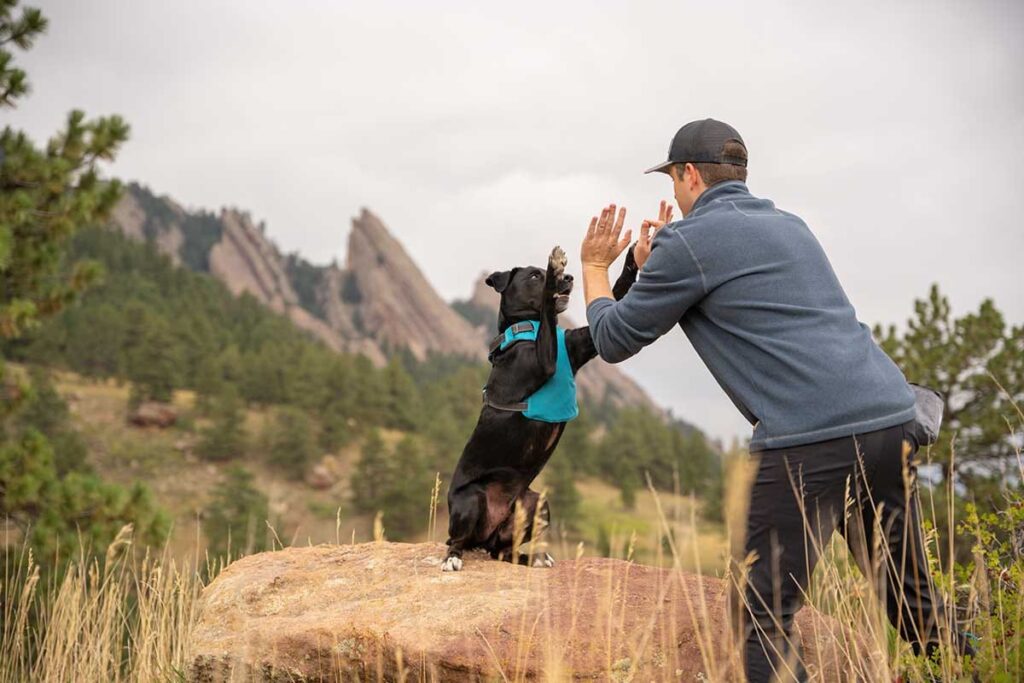
One of the key aspects of teaching your dog to have a strong recall is to build value for your dog by being close to you. To do this it’s important to find ways to make yourself more interesting than the environment around you while out in the world.
You can do this by bringing tug toys and treats with you on walks. In addition, you can praise, treat, or engage in a game of tug anytime your dog chooses to be close to you. Although this isn’t officially teaching a recall, it is an easy way to provide a foundation for your dog by helping them to understand being near you is a highly rewarded place to be.
Start Training Recalls
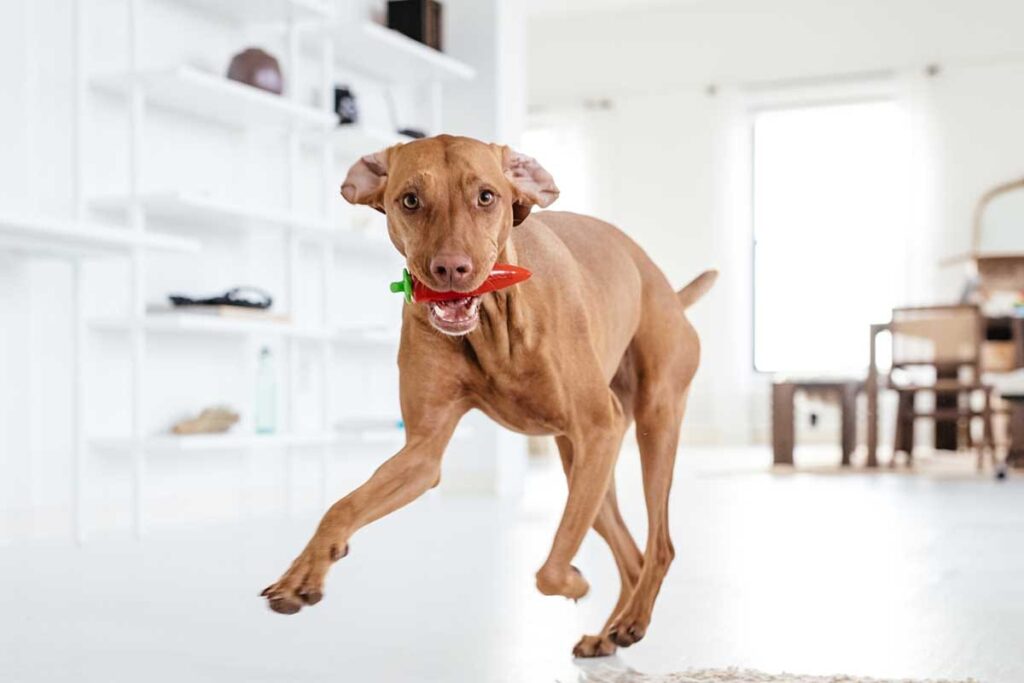
It’s never too early or too late to start teaching your dog how to come when called. Recall is a skill that all dogs can and should learn.
When training recalls, be sure to keep your training sessions fun and short so that your dog can be successful. Watch your dog’s body language for any sign of stress. Discontinue the training session if so because they will be too anxious to focus. We want recall training to be a fun game for our dogs, not something stressful.
Step 1
Start in a low-distraction environment. Inside your house when things are quiet and there aren’t a lot of distractions competing for your dog’s attention is a perfect place to start.
To teach a recall, stand next to your dog and say the recall word of choice like “come” or “here” in an excited and upbeat tone.
Note: Don’t use your dog’s name as a recall cue. We want something distinct and unique so your dog can learn the meaning of this particular cue.
After using your new verbal cue, give your dog a food treat when they look at you, click if you are clicker training, and praise your dog.
Step 2
Continue practicing the above for several repetitions.
When your dog is consistently looking to you for the reward when they hear the verbal recall cue, next take one step away from your dog before calling. When your dog turns and steps towards you offer lots of praise, click if you are clicker training, and treat your dog.
Practice calling your dog several times from literally just a step or two away.
Step 3
The better your dog gets the more you can start to slowly add in distance a step or two at a time while staying in the same room as your dog. When your dog comes don’t forget to praise and treat it each time.
Step 4
Now that your dog can recall across the room, don’t add more distance to your practice sessions while still inside your house. The goal isn’t to push your dog’s skill by seeing how far away you can get and have your dog come when called; Instead, the goal is to be successful and have fun.
With each repetition vary the distance you are from your dog. You can make some recalls easy by being a short distance just a few feet away from your dog. Make others more complicated by being in a different room across your house or apartment before calling.
These recall games are a fun training technique to energize your dog and build value in being close to you while providing physical and mental enrichment.
What Is Proofing
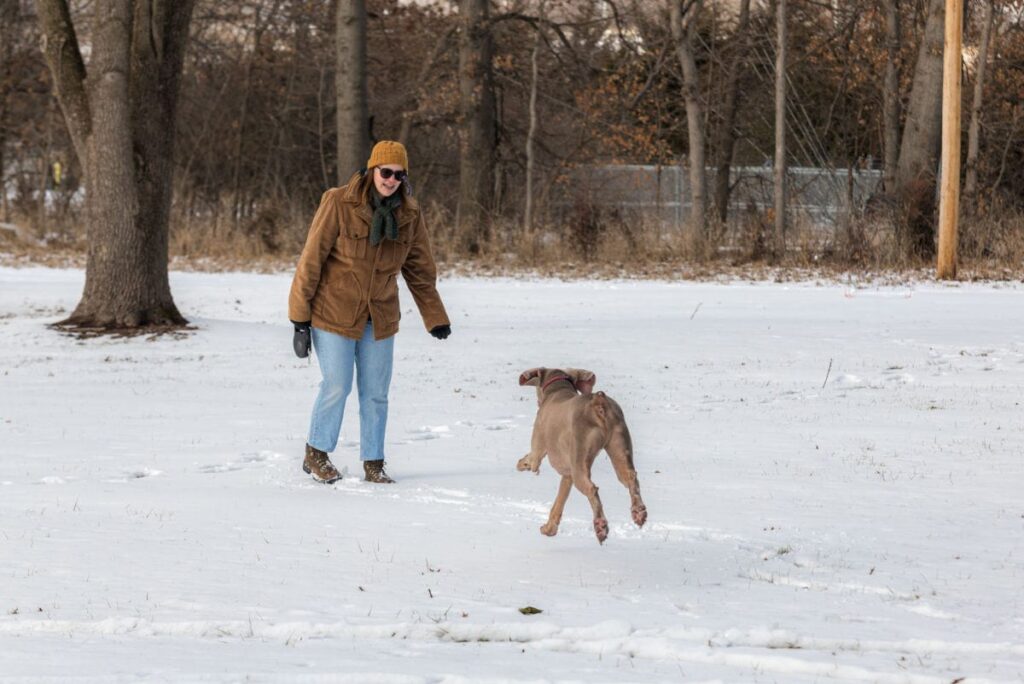
Proofing is a training method stage of dog training that refers to making sure that your dog can perform a specific behavior in a variety of situations with varying levels of distractions.
Once your dog can recall when called from anywhere in your home, it’s time to start practicing in a more distracting environment like your yard, a quiet sidewalk, or a quiet park. Moving to a more distracting environment will make recalling more complicated, so you’ll want to have high-value rewards for your dog. As you move to more distracting areas, you’ll also want to go back to the earlier steps to make sure that your dog is successful.
The ideal goal is eventually for your dog to be able to recall in any environment from any distraction, but you can’t expect that right away. Don’t be in a hurry to try and prove to yourself that your dog can come in a very distracting environment like a beach or a busy park. Slowly start to work on recall in areas that are more distracting.
You’ll need:
- a long lead
- favorite toy
- high-value treats or kibble
- clicker (if clicker training)
While working on recalls, keep your dog’s leash attached. You can also use a long-line leash in an open area to practice recalls at a long distance and around distractions. The eventual goal is for your dog to be able to see another dog, a flying ball, or be in a dog park, and when cued recall away from it. That level of recall proofing takes time and a lot of practice with a long leash before you will trust your dog to follow their recall cue off-leash.
Note: When practicing recalls follow leash laws regardless of how reliable your dog’s recall is.
Don’t Pester
When working on recall behaviors we want our dogs to enthusiastically come when they are called the first time.
Often dog owners can get in the habit of calling and calling and calling. The result is that their dog doesn’t understand that the first verbal cue is what they should listen to. Dogs can start to think that their recall command is “come, come, come, come, come” instead of just “come.”
If you find yourself having to say your dog’s recall cue repeatedly to get them to come, go back to the basics. Reteach the behavior starting right next to your dog and then build up to a further distance.
Always Reward Your Dog
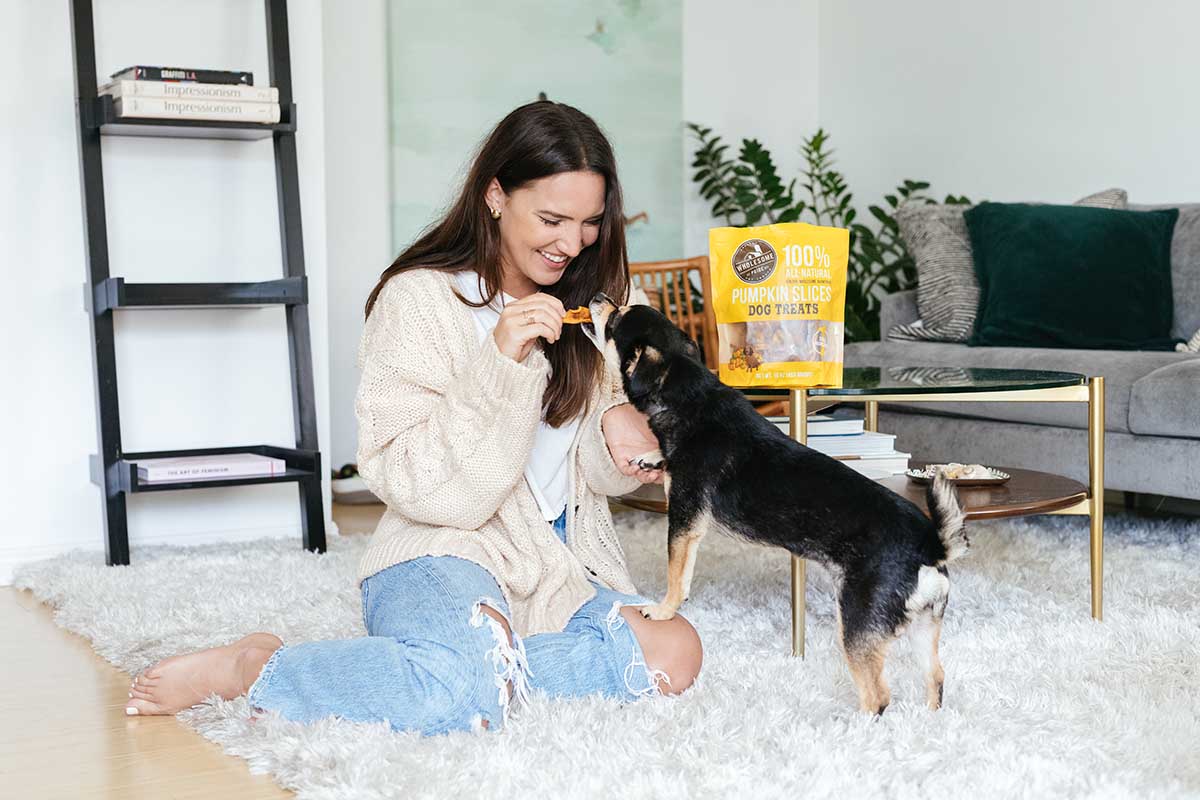
It’s important for your dog to know that when they come when called, they will be rewarded. Even for dogs who know how to come when called, we want to always be building and maintaining the value for our dogs in recalling to us. Try to always have high-value treats on you to use for dog recall training and practice.
Remember, coming when called can be a behavior that requires your dog to stop doing a thing they were enjoying like sniffing or playing. This is hard for dogs, and so we want to make sure they know that they will be rewarded for making the choice to turn away from something interesting and instead engage with us.
Never Punish A Slow Come
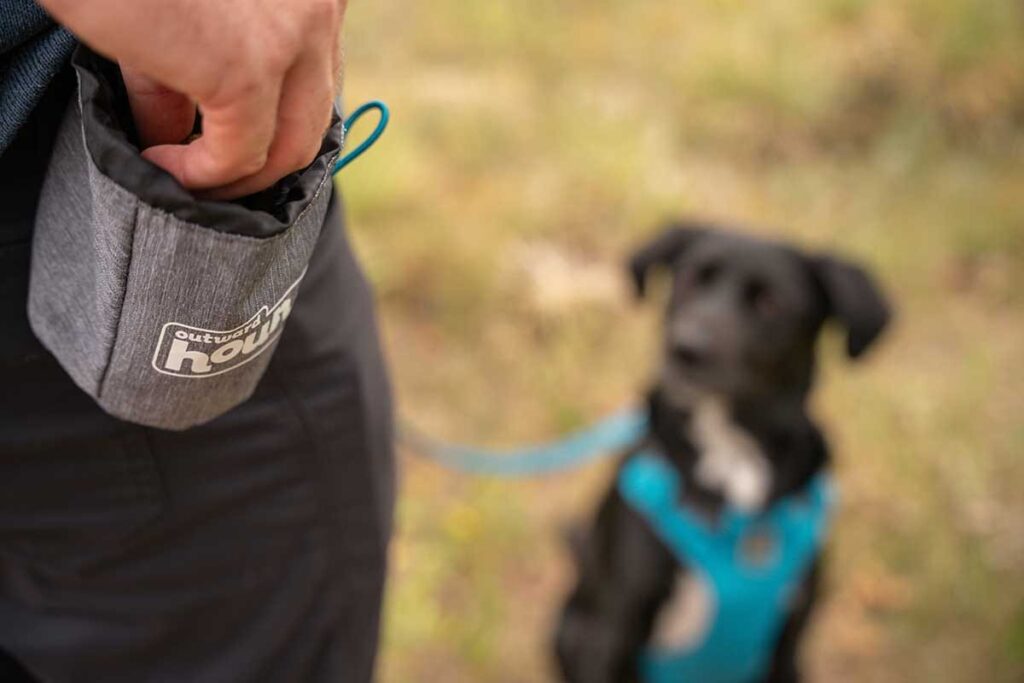
Dog training should always utilize positive reinforcement techniques and approaches. We want our dog to see having a good recall, and being close to us as a fun game.
The goal is to race back to you as quickly as possible. If your dog doesn’t come when called it can be scary, overwhelming, and if you’re in public a little bit embarrassing. If your dog blows you off and doesn’t come when called it can feel natural to be annoyed or frustrated at your dog. Try to remember that your dog isn’t ignoring you to make you mad or frustrate you. At that moment your dog’s instincts kicked in and they chose to stay with another dog or a smell that was more interesting.
Coming when called sounds like a basic skill, but it’s a complex behavior for dogs to learn.
Punishing your dog for coming to you, even if they are slow will be confusing for your dog. Punishing your dog for a slow recall will also lead to your dog thinking they might be punished for coming, the opposite of what we want dogs to learn. If your dog doesn’t come when called or is slow to recall it’s just a sign you need to train more, or your dog needs a training refresher. If you find your dog isn’t recalling, slowly go back to basics and start practicing recalls at a slow distance with minimal distractions before working back up to more challenging recalls.
It’s Never Too Late to Start
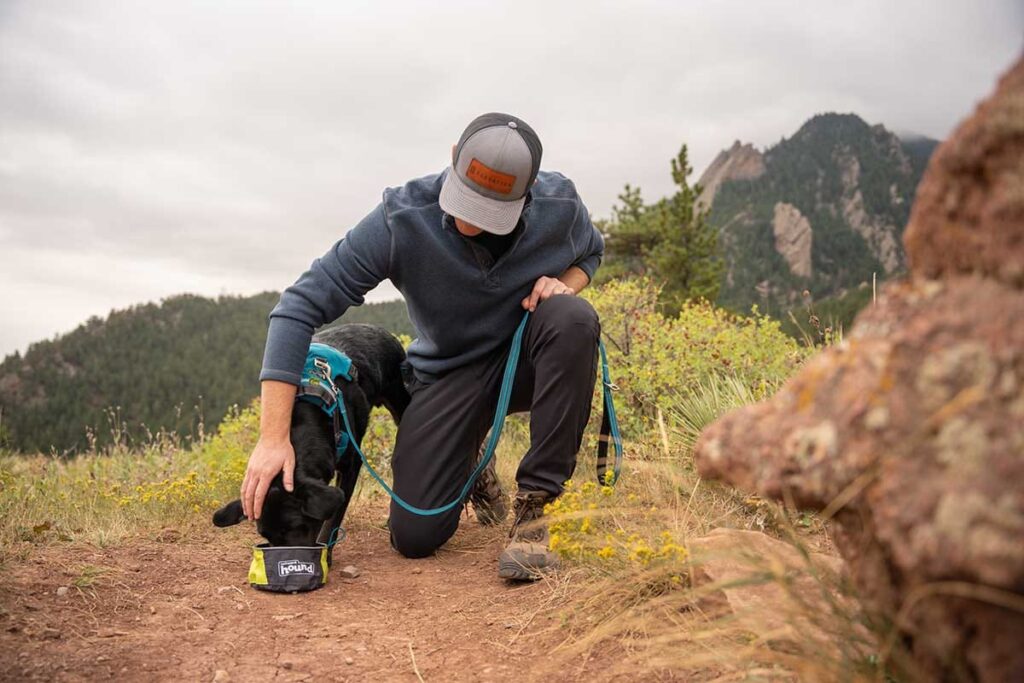
Even if you don’t have an interest in teaching your dog a lot of tricks, recall is a behavior that every dog can benefit from learning. You never know when a door will accidentally be left open, or a leash could break, and it’s a dog off-leash situation. At that point, you need your dog to come immediately to you.
You should teach recall to a dog or puppy as soon as they come home, but even if you have a senior dog, it’s not too late to start teaching this lifesaving skill. And if you are struggling, you can always enlist the help of a dog trainer or enroll you and your family members in dog training classes.

